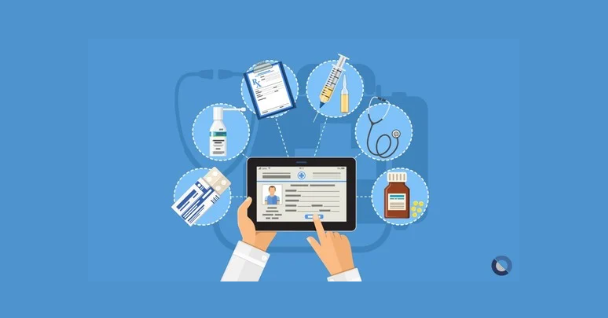
In the rapidly evolving landscape of healthcare, ensuring that healthcare organizations are properly credentialed is paramount to maintaining the highest standards of patient care. Credentialing is the process of verifying and assessing the qualifications of healthcare providers, ensuring they meet the necessary requirements and possess the skills needed to deliver quality services. This article explores the importance of credentialing for healthcare organizations and provides insights into optimizing and simplifying the credentialing process.
Understanding Credentialing:
Credentialing involves the systematic evaluation of a healthcare professional’s education, training, licensure, and experience to ensure they meet the standards set by regulatory bodies and healthcare organizations. This process not only protects patients but also safeguards the reputation of healthcare institutions.
Importance of Credentialing:

In the dynamic landscape of healthcare, ensuring the competence and qualifications of healthcare professionals is paramount. Credentialing, the process of evaluating and verifying the qualifications of healthcare providers, plays a crucial role in upholding the standards of quality care and patient safety. This article explores the significance of credentialing in healthcare organizations, emphasizing its impact on maintaining high standards, reducing risks, and fostering patient trust.
Ensuring Competence and Expertise:
Credentialing is the foundation of ensuring that healthcare professionals possess the necessary education, training, and experience to deliver quality care. By thoroughly evaluating their credentials, healthcare organizations can be confident that their staff members are competent and equipped to provide the best possible care to patients.
Compliance with Regulatory Standards:
Healthcare is a highly regulated industry, with various accrediting bodies and government agencies setting standards to safeguard patient well-being. Credentialing ensures compliance with these standards, helping organizations meet regulatory requirements and maintain a strong reputation within the healthcare community.
Mitigating Risks and Liability:
Credentialing is an effective risk management tool. By thoroughly vetting healthcare providers, organizations reduce the likelihood of errors, malpractice, and other adverse events. This not only protects patients but also shields the organization from potential legal and financial repercussions.
Enhancing Patient Safety:
Patients place immense trust in healthcare providers, and credentialing is instrumental in maintaining and enhancing this trust. Knowing that their healthcare team is thoroughly vetted and qualified instills confidence in patients, contributing to a positive patient experience and better overall outcomes.
Facilitating Interoperability:
In today’s interconnected healthcare environment, where professionals often collaborate across institutions, credentialing facilitates seamless interoperability. Shared credentialing databases and standardized processes enable healthcare professionals to move seamlessly between organizations, ensuring consistency in quality care.
Improving Organizational Reputation:
Credentialing is a reflection of an organization’s commitment to excellence. A strong credentialing process not only attracts top-tier talent but also enhances the organization’s reputation in the eyes of patients, insurers, and partnering institutions.
Adapting to Evolving Healthcare Trends:
As healthcare evolves, new specialties, technologies, and treatment modalities emerge. Credentialing ensures that healthcare professionals stay abreast of these changes by requiring ongoing education and training. This adaptability is crucial for providing cutting-edge care and maintaining relevance in the healthcare landscape.
Optimizing Credentialing Processes:
To streamline credentialing procedures, healthcare organizations can implement the following strategies:
a. Centralized Credentialing System: Establish a centralized system to manage credentialing processes, reducing redundancy and enhancing efficiency.
b. Technology Integration: Leverage advanced credentialing software to automate data collection, verification, and tracking, minimizing paperwork and manual errors.
c. Standardized Criteria: Define clear and consistent credentialing criteria, ensuring all healthcare professionals undergo a uniform evaluation process.
d. Collaboration with Credentialing Agencies: Partner with recognized credentialing agencies to expedite the verification of education, licensure, and other credentials.
Steps in the Credentialing Process:

Credentialing is a vital process in the healthcare industry that ensures healthcare professionals have the necessary qualifications and competencies to provide quality care. While the credentialing process may seem complex, breaking it down into clear steps can help healthcare professionals navigate the journey with ease. Let’s explore the essential steps in the credentialing process.
Application Submission:
The journey begins with the completion and submission of a comprehensive credentialing application. This application typically includes personal information, educational background, training, licensure, certifications, and work history. Accuracy and completeness are key at this stage to avoid delays in the process.
Primary Source Verification:
Once the application is submitted, the credentialing body conducts primary source verification. This involves directly contacting the educational institutions, training programs, licensing boards, and previous employers to confirm the accuracy of the information provided in the application.
Review of Professional References:
Healthcare professionals are often required to provide professional references as part of the credentialing process. These references offer insights into the individual’s clinical competence, ethical behavior, and overall professionalism. The credentialing body reviews these references to assess the applicant’s suitability for the position.
Review of Malpractice History:
A crucial step in the credentialing process involves reviewing the applicant’s malpractice history. This includes assessing any past claims or legal actions against the healthcare professional. A clean malpractice history is essential for maintaining the trust of both patients and healthcare organizations.
Background Check:
Credentialing includes a thorough background check to ensure that healthcare professionals meet ethical and legal standards. This step often involves screening for criminal history, ensuring compliance with healthcare regulations, and confirming that the individual is in good standing with relevant licensing boards.
Interview and Site Visit:
In some cases, healthcare professionals may be required to undergo an interview as part of the credentialing process. This interview allows the credentialing body to assess communication skills, professionalism, and the individual’s commitment to providing high-quality care. Additionally, a site visit may be conducted to evaluate the working environment and facilities.
Credentialing Committee Approval:
After completing the aforementioned steps, the gathered information is presented to a credentialing committee for final review and approval. This committee comprises experienced healthcare professionals who assess the applicant’s overall suitability based on the collected data.
Notification of Credentialing Status:
Finally, healthcare professionals receive notification of their credentialing status. If approved, they can commence their practice within the organization. If additional information is required or if there are concerns, the credentialing body communicates these issues to the applicant for resolution.
Challenges and Solutions:
Credentialing processes may face challenges such as delays, incomplete information, and communication issues. To address these challenges:
a. Clear Communication: Maintain open communication with applicants, keeping them informed about the progress and requirements of the credentialing process.
b. Continuous Improvement: Regularly review and update credentialing processes to address bottlenecks and enhance efficiency.
c. Staff Training: Ensure that staff involved in the credentialing process are well-trained and updated on the latest industry standards and technology.
How healthcare organizations Ensure Quality and Patient Safety

Ensuring quality and patient safety is paramount for healthcare organizations, as it directly impacts patient outcomes, satisfaction, and overall trust in the healthcare system. Implementing effective strategies and adopting a proactive approach are essential to create a culture of excellence and continuous improvement. In this article, we will explore optimized methods that healthcare organizations can employ to enhance quality and patient safety.
Robust Training Programs:
Investing in comprehensive training programs for healthcare professionals is crucial. These programs should not only focus on technical skills but also emphasize communication, teamwork, and situational awareness. Regular updates on best practices, new technologies, and evidence-based protocols ensure that healthcare providers are equipped with the latest knowledge and skills to deliver high-quality care.
Standardized Protocols and Procedures:
Establishing and consistently implementing standardized protocols and procedures reduce variability in care, improving both quality and safety. Healthcare organizations should regularly review and update these guidelines based on the latest research and industry standards. This ensures that all staff members follow a unified approach to patient care, minimizing the risk of errors.
Effective Communication Systems:
Communication breakdowns are a common cause of adverse events in healthcare. Implementing efficient communication systems, such as electronic health records (EHRs) and secure messaging platforms, facilitates seamless information exchange among healthcare professionals. This ensures that everyone involved in patient care has access to accurate and up-to-date information, reducing the likelihood of errors.
Data Analytics for Continuous Improvement:
Leveraging data analytics allows healthcare organizations to identify trends, patterns, and areas for improvement. By analyzing clinical outcomes, patient feedback, and incident reports, organizations can proactively address potential issues. Continuous monitoring enables a data-driven approach to decision-making, fostering a culture of accountability and improvement.
Patient and Family Engagement:
Engaging patients and their families in the care process is a powerful strategy for enhancing safety. Encouraging open communication, providing clear information about treatment plans, and involving patients in shared decision-making empower them to actively participate in their healthcare journey. This collaborative approach fosters a sense of trust and transparency.
Regular Audits and Inspections:
Conducting regular internal and external audits helps healthcare organizations assess their adherence to quality and safety standards. These audits can identify areas of non-compliance, allowing organizations to take corrective actions promptly. External inspections by accrediting bodies contribute to maintaining a high level of quality and patient safety.
Cultivate a Culture of Continuous Improvement:
Fostering a culture of continuous improvement is essential for ensuring long-term success in quality and patient safety. Encourage healthcare professionals to share feedback, report incidents without fear of reprisal, and actively participate in quality improvement initiatives. Recognize and celebrate achievements, creating a positive environment that motivates staff to strive for excellence.